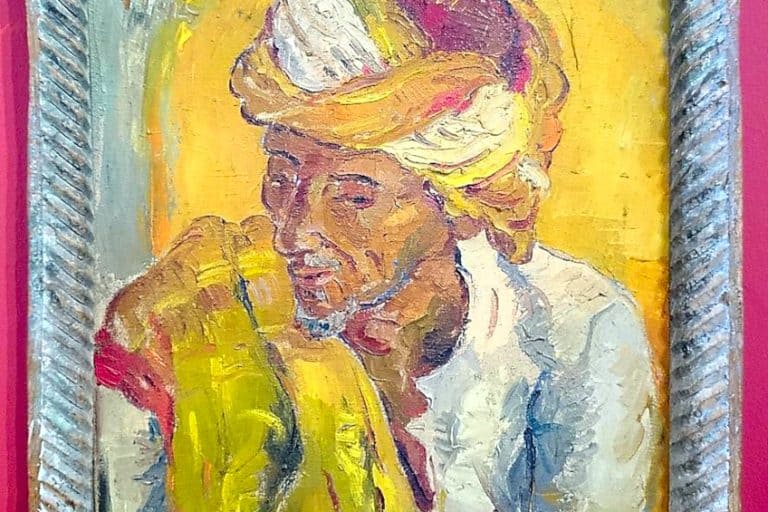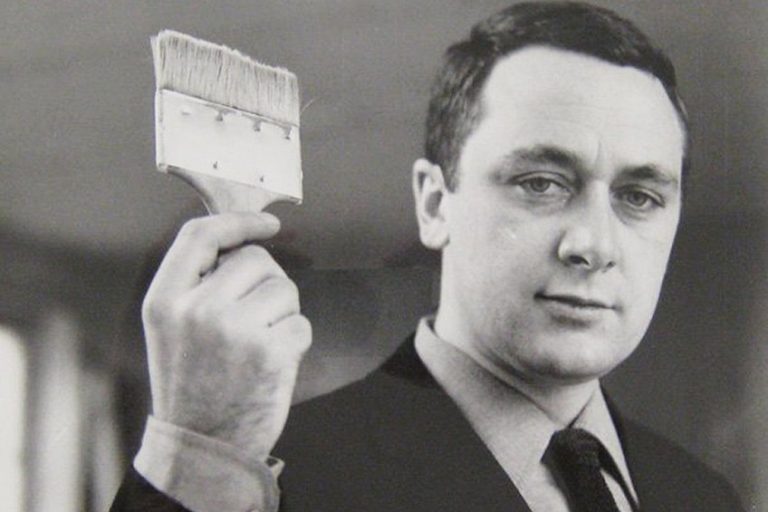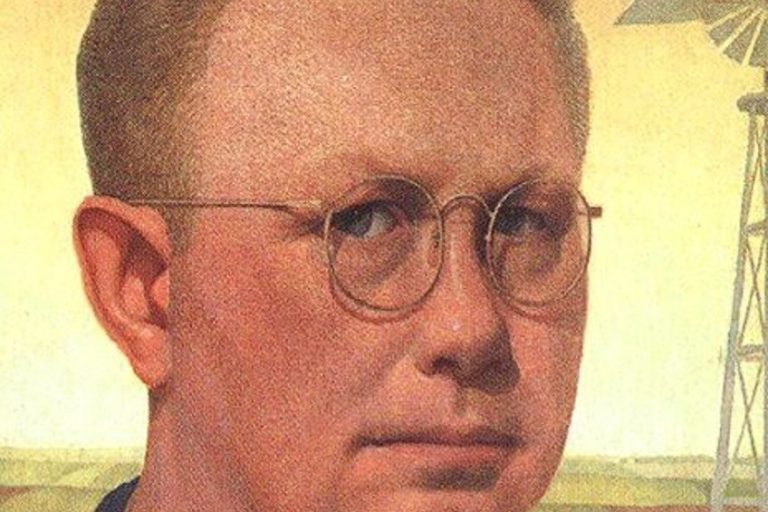Ecuadorian Artists – Presenting a Vibrant South American Culture
Ecuador boasts a rich cultural heritage reflected in its vibrant art scene, with numerous talented artists making significant contributions to the global art world. From painters capturing the essence of Ecuadorian landscapes to avant-garde artists pushing boundaries, Ecuador’s artistic landscape is diverse and captivating. In this article, we delve into the works of top Ecuadorian artists who have left an indelible mark on art history, exploring their unique styles, influences, and notable artworks that continue to inspire and resonate with audiences worldwide.
Table of Contents
- 1 Art in Ecuador
- 2 Top 10 Ecuadorian Artists to Know
- 2.1 Victor Mideros (1851 – 1911)
- 2.2 Camilo Egas (1889 – 1962)
- 2.3 Eduardo Kingman (1913 – 1997)
- 2.4 Oswaldo Guayasamín (1919 – 1999)
- 2.5 Aníbal Villacís (1927 – 2012)
- 2.6 Enrique Tábara (Born 1930)
- 2.7 Theo Constanté (1934 – 2019)
- 2.8 Nelson León (Born 1948)
- 2.9 Isabel Bastidas (Born 1953)
- 2.10 Eduardo Segovia (Born 1968)
- 3 Frequently Asked Questions
Art in Ecuador
The history of art in Ecuador is as diverse as its landscapes and cultures. Pre-Columbian civilizations like the Valdivia, Chorrera, and Manteño-Huancavilca left behind intricate pottery, sculptures, and goldwork, showcasing advanced artistic skills and a deep connection to nature and spirituality.

With the arrival of Spanish colonization in the 16th century, Ecuadorian art began to blend indigenous traditions with European influences, seen in the Baroque and Mestizo styles prevalent in churches and religious art of the colonial period. In the 19th and 20th centuries, Ecuadorian art witnessed a flourishing of national identity and modernism. Artists like Oswaldo Guayasamín gained international recognition for their bold expressions of social and political themes, while others like Camilo Egas embraced modernist techniques and abstraction.
Today, Ecuador’s art scene continues to evolve, embracing a wide range of styles and mediums that reflect the country’s rich cultural heritage and contemporary perspectives.
Top 10 Ecuadorian Artists to Know
Discovering the vibrant tapestry of Ecuadorian art, we delve into the lives and works of 10 remarkable artists who have shaped and enriched the country’s artistic landscape. From pioneers of modernism to champions of social realism, each artist brings a unique perspective and artistic vision, reflecting the diverse cultural heritage and creative dynamism of Ecuador. Join us on a journey through the achievements and contributions of these top 10 Ecuadorian artists, exploring their careers, artworks, and lasting impact on the world of art.

Victor Mideros (1851 – 1911)
| Birth | 1851 |
| Death | 1911 |
| Place of Birth | Ecuador |
| Genre of Work | Realism, Portraiture |
| Notable Artworks |
|
Victor Mideros was a significant figure in Ecuadorian art during the late 19th and early 20th centuries. He initially studied in Europe, where he was influenced by Romanticism and Realism. Upon returning to Ecuador, Mideros focused on painting landscapes and portraits, showcasing his technical skill and attention to detail. His works often depicted romanticized scenes of Ecuadorian life, capturing the beauty of the country’s landscapes and the essence of its people.
Mideros’ paintings are characterized by their rich colors, realistic depiction of nature, and emotional depth, making him a notable artist of his time.

Camilo Egas (1889 – 1962)
| Birth | 1889 |
| Death | 1962 |
| Place of Birth | Quito, Ecuador |
| Genre of Work | Modernism, Indigenous Art |
| Notable Artworks |
|
Camilo Egas was a key figure in the development of modern art in Ecuador. He studied in Europe and was exposed to various artistic movements, including Cubism and Expressionism. Egas returned to Ecuador and became known for his unique blend of indigenous themes with modernist techniques. His artworks often featured bold colors, geometric shapes, and symbolic representations of Ecuadorian culture.
Egas’ paintings played a crucial role in shaping Ecuadorian modernism, influencing subsequent generations of artists and contributing to the country’s artistic identity.

Eduardo Kingman (1913 – 1997)
| Birth | 1913 |
| Death | 1997 |
| Place of Birth | Loja, Ecuador |
| Genre of Work | Social Realism, Indigenous Art |
| Notable Artworks |
|
Eduardo Kingman was a prominent Ecuadorian artist known for his powerful social realist paintings. His early works depicted rural life and indigenous communities, highlighting the struggles and resilience of marginalized groups. Kingman’s art evolved over time to include more abstract and symbolic elements, reflecting broader themes of human suffering and social injustice. His use of earthy tones, expressive brushwork, and emotive compositions earned him recognition both nationally and internationally.
Kingman’s legacy continues to inspire artists and activists, emphasizing the role of art in addressing societal issues.

Oswaldo Guayasamín (1919 – 1999)
| Birth | July 6, 1919 |
| Death | March 10, 1999 |
| Place of Birth | Quito, Ecuador |
| Genre of Work | Expressionism, Social Realism |
| Notable Artworks |
|
Oswaldo Guayasamín is one of Ecuador’s most renowned artists, known for his emotionally charged and politically charged artworks. His paintings often depicted human suffering, social inequality, and the resilience of the human spirit. Guayasamín’s style evolved from expressionism to a unique blend of realism and symbolism, incorporating bold colors and powerful gestures. He gained international acclaim for his murals, sculptures, and paintings, becoming a prominent voice for Latin American art and culture.
Guayasamín’s legacy extends beyond his artistic achievements, as he was also an advocate for social justice and human rights.

Aníbal Villacís (1927 – 2012)
| Birth | November 11, 1927 |
| Death | March 7, 2012 |
| Place of Birth | Ecuador |
| Genre of Work | Unknown |
| Notable Artworks |
|
Aníbal Villacís was a leading figure in Ecuadorian art during the mid-20th century. His paintings often combined elements of surrealism, social commentary, and indigenous symbolism. Villacís’ artworks explored themes of identity, human relationships, and cultural heritage, reflecting the complexities of Ecuadorian society. He experimented with different techniques and styles, ranging from figurative to abstract, showcasing his versatility as an artist.
Villacís’ contributions to Ecuadorian art earned him recognition both at home and abroad, solidifying his place in the country’s art history.
Enrique Tábara (Born 1930)
| Birth | 1930 |
| Place of Birth | Guayaquil, Ecuador |
| Genre of Work | Expressionism, Abstract Art |
| Notable Artworks |
|
Enrique Tábara is a prominent Ecuadorian artist known for his contributions to abstract art. He began his career in the 1950s and quickly gained recognition for his innovative use of color, form, and texture. Tábara’s artworks often explore themes of nature, spirituality, and human emotions, using bold brushstrokes and dynamic compositions to create visually striking pieces. He has participated in numerous exhibitions both in Ecuador and internationally, showcasing his talent and artistic vision.
Tábara’s influence extends beyond his paintings, as he has also been involved in art education and cultural initiatives, leaving a lasting impact on Ecuador’s art scene.

Theo Constanté (1934 – 2019)
| Birth | 1934 |
| Death | 2019 |
| Place of Birth | Quito, Ecuador |
| Genre of Work | Surrealism, Magical Realism |
| Notable Artworks |
|
Theo Constanté was a celebrated Ecuadorian artist known for his vibrant depictions of Afro-Ecuadorian culture and folklore. His career spanned several decades, during which he created a diverse body of work encompassing paintings, sculptures, and installations. Constanté’s artworks often celebrated the richness and diversity of Ecuador’s cultural heritage, portraying traditional dances, rituals, and symbols with a colorful and energetic style.
He was also a respected art educator and advocate for cultural preservation, contributing significantly to the recognition and appreciation of Afro-Ecuadorian art and traditions.

Nelson León (Born 1948)
| Birth | 1948 |
| Death | Present |
| Place of Birth | Unknown |
| Genre of Work | Unknown |
| Notable Artworks | Unknown |
Nelson León is a contemporary Ecuadorian artist recognized for his meticulous and detailed paintings. His career has been characterized by a focus on hyperrealism, where he meticulously captures everyday objects, landscapes, and urban scenes with astonishing realism. León’s artworks often evoke a sense of nostalgia and introspection, inviting viewers to contemplate the beauty and complexity of ordinary moments. He has exhibited his works in various galleries and art events, earning acclaim for his technical skill and artistic vision.
León continues to be an influential figure in Ecuadorian art, inspiring audiences with his lifelike depictions and artistic mastery.
Isabel Bastidas (Born 1953)
| Birth | 1953 |
| Death | Present |
| Place of Birth | Unknown |
| Genre of Work | Unknown |
| Notable Artworks | Unknown |
Isabel Bastidas is a renowned Ecuadorian artist known for her innovative mixed-media artworks. Her career began in the 1970s, during which she experimented with combining traditional painting techniques with unconventional materials such as textiles, found objects, and natural elements. Bastidas’ artworks often explore themes of identity, femininity, and environmental consciousness, creating visually captivating and thought-provoking pieces. She has participated in numerous exhibitions and art projects, showcasing her versatility and creativity across different mediums.
Bastidas’ contributions to contemporary art in Ecuador have earned her recognition as a pioneering artist pushing boundaries and challenging artistic conventions.
Eduardo Segovia (Born 1968)
| Birth | 1968 |
| Death | Present |
| Place of Birth | Unknown |
| Genre of Work | Unknown |
| Notable Artworks | Unknown |
Eduardo Segovia is a versatile Ecuadorian artist known for his diverse body of work spanning from hyperrealism to abstract compositions. His career has been marked by an exploration of various artistic styles and techniques, reflecting a deep curiosity and experimentation in his art practice. Segovia’s artworks often blend realism with imaginative elements, creating visually engaging and conceptually rich pieces. He has exhibited his works nationally and internationally, garnering praise for his technical skill, creativity, and artistic vision. Segovia continues to evolve as an artist, pushing the boundaries of contemporary art and inspiring audiences with his dynamic and expressive artworks.
The top Ecuadorian artists showcased in this article represent a tapestry of creativity and innovation, reflecting the country’s rich cultural legacy and artistic evolution. From the traditional landscapes that capture the essence of Ecuador’s natural beauty to the contemporary explorations of identity and social issues, these artists have left a lasting legacy in the art world. Their works not only celebrate Ecuador’s heritage but also contribute to global conversations on art, pushing boundaries and inspiring future generations of artists. Ecuadorian art continues to thrive, inviting audiences to explore its depths and appreciate the diverse talents that enrich the cultural fabric of this dynamic nation.
Frequently Asked Questions
What Distinguishes Ecuadorian Art from Other Artistic Traditions?
Ecuadorian art is distinguished by its diverse cultural influences, ranging from indigenous traditions to European and contemporary artistic movements. The fusion of these influences often results in artworks that explore themes unique to Ecuador, such as cultural identity, social issues, and environmental concerns.
How Has the Global Art Market Impacted the Recognition and Appreciation of Ecuadorian Art and Artists?
The global art market has played a significant role in increasing the recognition and appreciation of Ecuadorian art and artists by providing platforms for international exposure, collaborations, and art exchanges. This exposure has helped elevate Ecuadorian art onto the global stage and fostered dialogue and appreciation for its unique artistic heritage.
Isabella studied at the University of Cape Town in South Africa and graduated with a Bachelor of Arts majoring in English Literature & Language and Psychology. Throughout her undergraduate years, she took Art History as an additional subject and absolutely loved it. Building on from her art history knowledge that began in high school, art has always been a particular area of fascination for her. From learning about artworks previously unknown to her, or sharpening her existing understanding of specific works, the ability to continue learning within this interesting sphere excites her greatly.
Her focal points of interest in art history encompass profiling specific artists and art movements, as it is these areas where she is able to really dig deep into the rich narrative of the art world. Additionally, she particularly enjoys exploring the different artistic styles of the 20th century, as well as the important impact that female artists have had on the development of art history.
Learn more about Isabella Meyer and the Art in Context Team.
Cite this Article
Isabella, Meyer, “Ecuadorian Artists – Presenting a Vibrant South American Culture.” Art in Context. April 4, 2024. URL: https://artincontext.org/ecuadorian-artists/
Meyer, I. (2024, 4 April). Ecuadorian Artists – Presenting a Vibrant South American Culture. Art in Context. https://artincontext.org/ecuadorian-artists/
Meyer, Isabella. “Ecuadorian Artists – Presenting a Vibrant South American Culture.” Art in Context, April 4, 2024. https://artincontext.org/ecuadorian-artists/.











